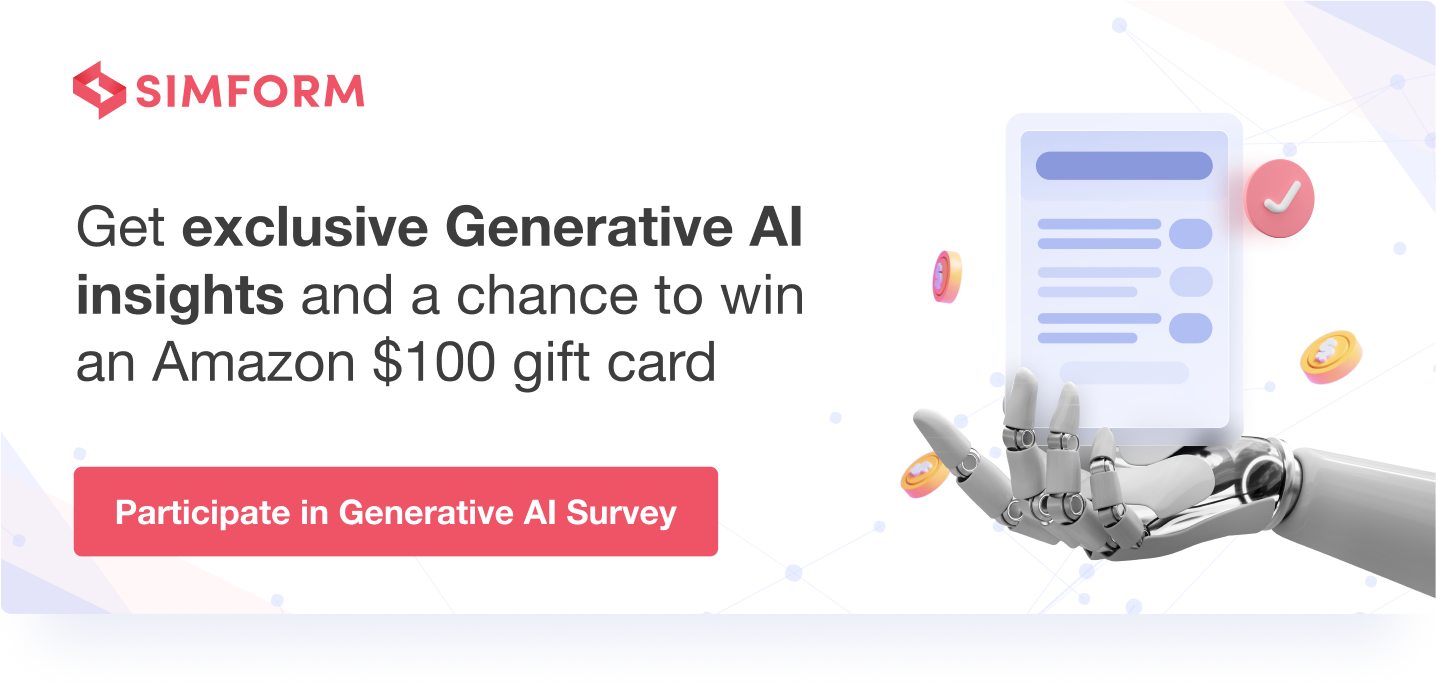What is generative AI?
Generative AI refers to artificial intelligence systems that have the capability to generate new content (text, images, audio, synthetic data) using the data on which they were trained. The output generated by these AI systems could include poetry, a physics explanation, a video, or even new music. Foundation models, such as GPT-3 and Stable Diffusion, serve as the basis for many generative AI applications.
The question is, when did generative AI become popular? After the release of ChatGPT, the hype around generative AI is rapidly growing. It got featured on Gartner’s 2023 Emerging Technologies and Trends Impact Radar, recognized as a highly influential and swiftly advancing technology set to revolutionize productivity. What has made generative AI so popular in recent times is the fact that people can now use natural language prompts to interact with AI. This has led to a variety of applications across industries where AI generators assist with tasks such as writing, research, coding, and design.
Benefits of generative AI
- Improved decision-making: Generative AI models can provide insights and predictions based on data analysis, helping businesses make more informed decisions. Based on the survey of generative ai almost 85% of leaders regularly incorporate generative AI into their work.
- Innovation: Businesses can generate ideas for new products and processes using generative AI. These practices foster innovation and help teams stay ahead of the curve.
- Personalization: Generative AI models can be trained on individual user data to facilitate personalized customer experiences.
- Accelerated TAT- Generative AI helps generate new data faster, improving turnaround time for your projects. This is also helpful in improving business agility and adapting to changing customer demands.
Challenges of generative AI
- Resource intensive: Training a generative AI model is an extremely complex process requiring much time and resources. Even then, ensuring high accuracy in its output is not easy.
- Slower responses-Generative AI can have higher latency due to the massive scale of operations. This means slower responses in real-time interactive apps like chatbots or AI voice assistants.
- Unreliable results: Generative AI relies on high-quality data to make accurate predictions. So incomplete, inaccurate, or outdated data can lead to unreliable results.
- Security argument- Many organizations have argued on using user data to train AI models. There are concerns regarding the security of user data, privacy, and accessibility.
- Bias and ethical concerns: If the training data contains bias or prejudice, generative AI models can perpetuate those biases in their output.Plus, using generative AI models for creating fake content raises ethical concerns about the potential for misinformation and manipulation.
- Plagiarism and copyright infringement: Generative AI can promote new forms of plagiarism that ignore the rights of content creators and artists whose original work is used to train the models.
- Potential for misuse and abuse: Generative AI makes it easier to create fake news, deepfakes, and other misinformation that can be used for malicious purposes, such as social engineering attacks.
Evolution of generative AI
Generative AI has its origins in neural networks. Neural networks, inspired by the biological neural networks in human brains, are composed of interconnected nodes that transmit signals between each other. By adjusting the connections between nodes, neural networks are able to “learn” to perform tasks simply from exposure to examples.
The 1980s and 1990s saw incremental expansion of neural networks. Recurrent neural networks (RNNs) emerged, capable of learning sequences and patterns in data. By 1997, neural networks had significantly advanced – successfully generating handwritten digits 0-9, though language and creative capabilities remained a challenge.
A major breakthrough came in 2017 with the invention of the Transformer architecture. Unlike previous neural networks, transformers process an entire sequence of data at once, allowing much greater context and coherence. In 2018, OpenAI built on transformers to create GPT-1 and GPT-2 – language models finally capable of paragraph-length text generation.
Then 2020 brought the commercial release of GPT-3 by OpenAI, the most powerful transformer-based language model yet. Soon, Google’s Bard and Anthropic’s Claude became popular generative AI examples too, followed by a range of generative AI chatbots. Since 2020, the pace of evolution in generative AI continues rapidly – with models incorporating ever more data in pursuit of more sophisticated, trustworthy, and safe generative capabilities.
How do generative AI models work?
Generative AI models work by learning the patterns in a dataset and then using that knowledge to create new content similar to the original data. These models are ‘trained’ (by feeding them the datasets) to facilitate this learning.
The follow-up question is: how do you develop generative AI models? So, there are various methods/techniques that you can use to develop a generative AI model. Depending on the type of data set being used and the desired outcome, generative AI training techniques can involve deep learning, adversarial learning, reinforcement learning, and more.
#1. Generative Adversarial Networks (GANs)
Generative Adversarial Networks, or GANs, are also a type of neural network used in machine learning to generate new data from existing information. There are two main components of GANs – a generator and a discriminator.
- Generator –It creates new data by analyzing the data pattern based on user input.
- Discriminator – This component evaluates whether the data is real or fake.
Whenever there is user input/prompt, the generator will generate new data, and the discriminator will analyze it for authenticity. Feedback from the discriminator enables algorithms to adjust the generator parameters and refine the output.
This process continues until the generator produces data indistinguishable from the input information.
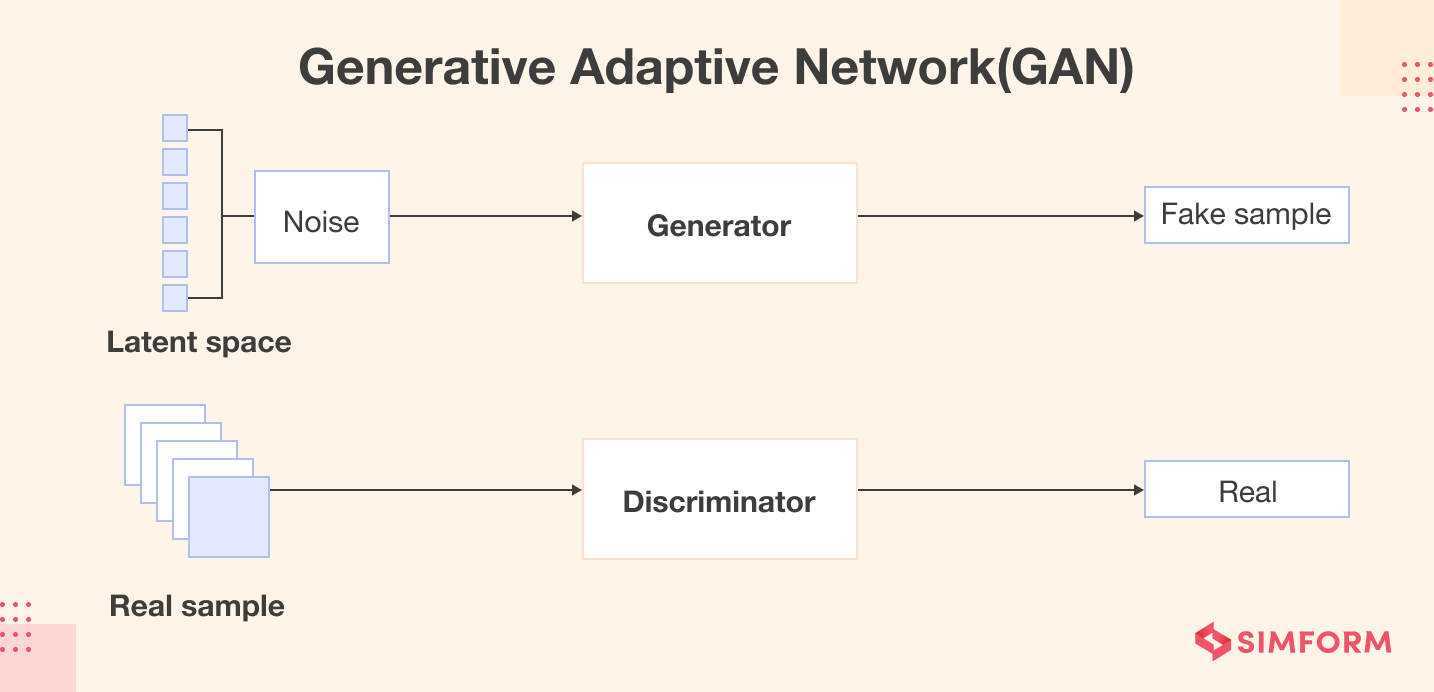
GANs have several practical applications across business domains, and so, many popular tools leverage this model to offer useful features:
- StyleGAN –It’s a type of GAN that helps generate high-quality images with realistic fixtures and details in image synthesis.
- CycleGAN – This tooluses GANs for image-to-image translation and converts one style to another.
- DALL-E –It is an AI tool that uses GANs to convert text prompts into images.
- GauGAN-Nvidia has developed this tool which uses GANs to generate realistic landscapes from simple sketches.
#2. Transformer-based models
A Transformer-based model is a type of neural network used for various natural language processing tasks such as machine translation, text summarization, and language understanding. These models majorly power various large language models – the foundation of generative AI.
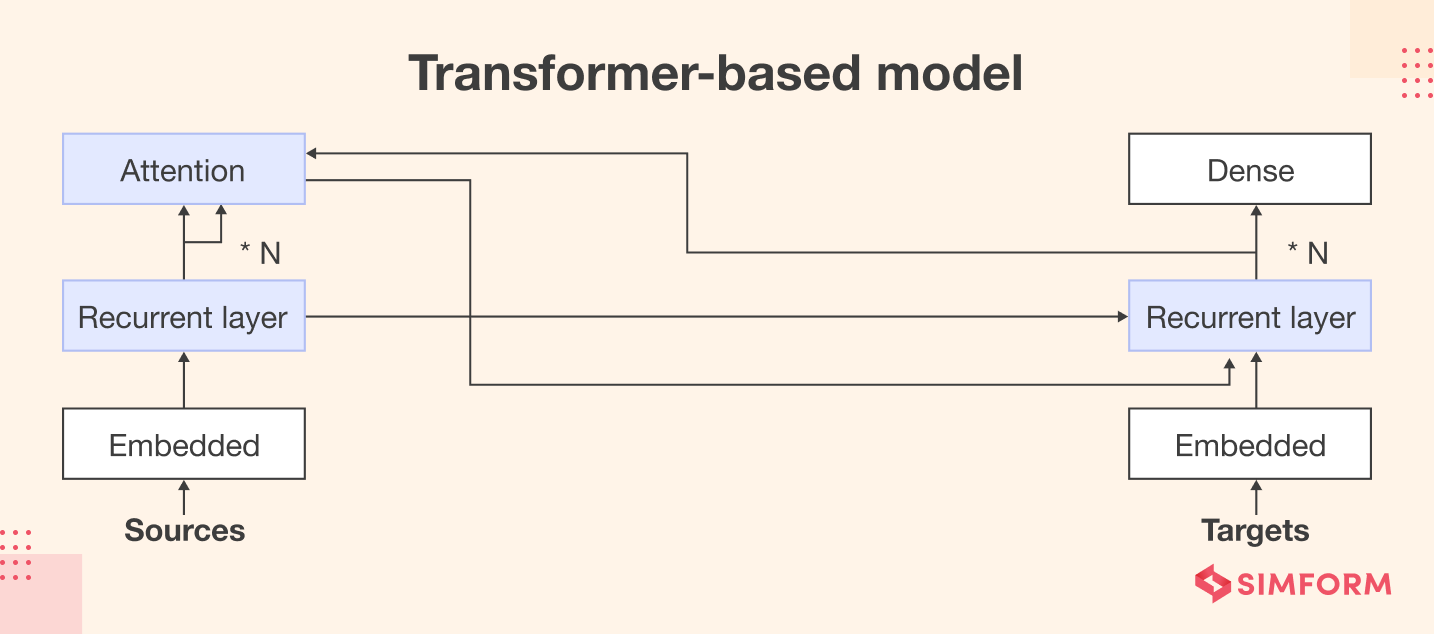
The Transformer model consists of two main components: the encoder and the decoder. The encoder processes the input sequence while the decoder generates the output sequence.
As we mentioned earlier, a good example of a Transformer-based model is the GPT-3 language model, which can generate coherent and contextually relevant text when given a prompt.
The transformer model uses a mechanism called “self-attention” to identify the relevance of each word in a prompt and how they relate to each other in the context of the input sequence.
Upon understanding logical relationships between words in the prompt, these models are able to understand the instructions well and produce a coherent output.
#3. Variational Autoencoders (VAEs)
Variational autoencoders are deep learning models that generate new data based on an input dataset. VAEs contain two neural networks – an encoder and a decoder. VAEs work by first training an encoder network to reduce the input data to meaningful latent variables that capture the most salient features. The decoder network then learns to take sampled points from that space and convert them back into realistic data outputs. A degree of randomness allows the decoder to create new and diverse outputs that resemble the original inputs.
#4. Diffusion models
Diffusion models are generative deep learning models that create high-fidelity synthetic data by reversing a process in which real data is incrementally corrupted with noise. They work by first taking real data examples and gradually adding noise to destroy the structure and make the examples unrecognizable. Then, a large neural network is trained to remove the noise in fine-grained steps, eventually generating pristine new examples similar to the original real data.
Check out our blog “How Generative AI Works” for a detailed breakdown of how each of these models works.
How to evaluate generative AI models?
There are three parameters you can use to evaluate a generative AI model:
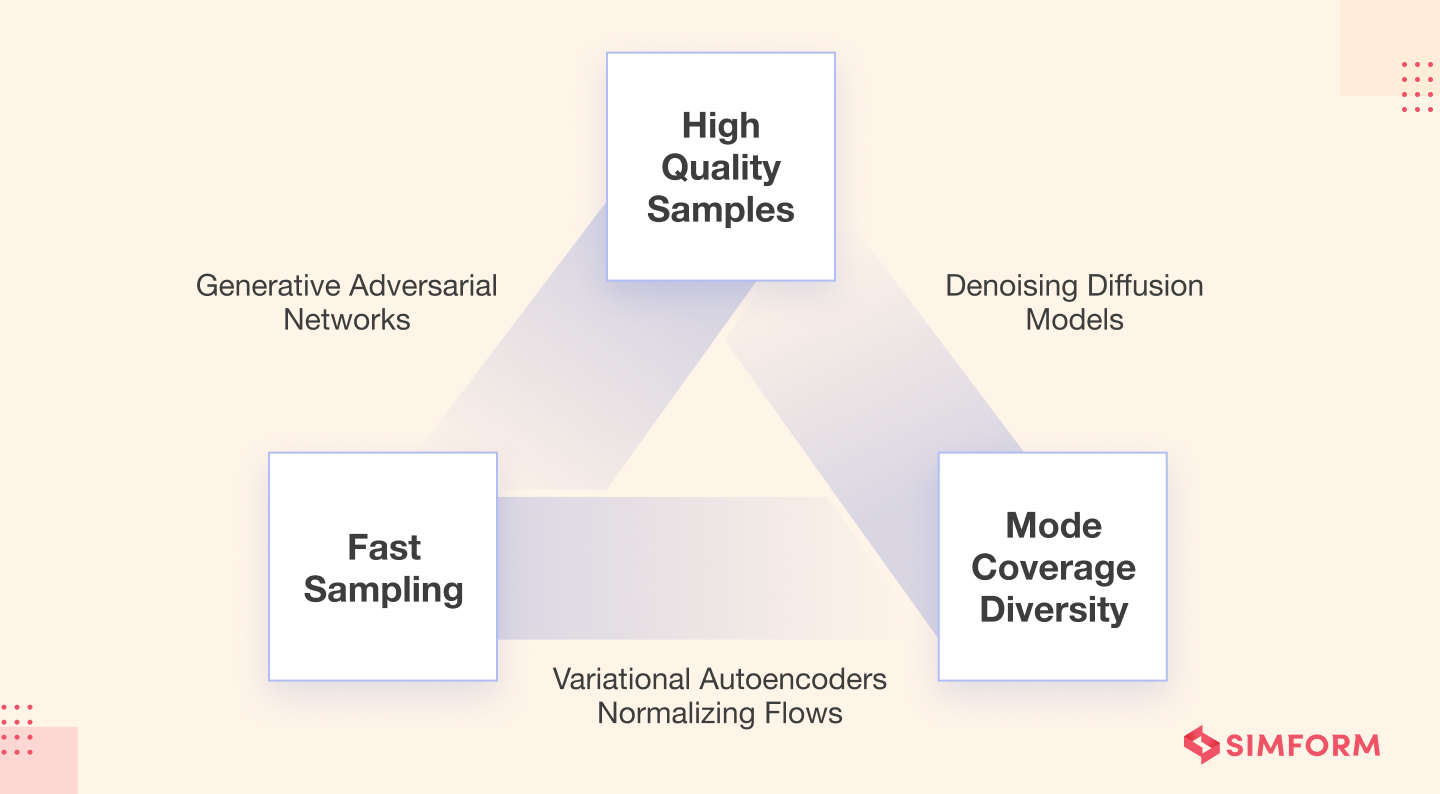
- Quality: High-quality generated outputs are crucial for applications that interact directly with users. Poor speech quality makes it difficult to understand. Similarly, the desired outputs should be visually indistinguishable from natural images in image generation.
- Diversity: An excellent generative model captures the minority modes in its data distribution without sacrificing generation quality. This helps reduce undesired biases in the learned models.
- Speed: Many interactive applications, such as real-time image editing, require fast generation in content creation workflows.
A good generative AI model should produce high-quality outputs indistinguishable from accurate data, capture the diversity and nuances present in the training data, and operate at a speed suitable for the intended application or use case.
Uses of generative models
#1. Text generation
This is a use case of generative AI contributing the most to the rising popularity of AI adoption in content creation. Generative AI tools like ChatGPT are widely used by individuals and businesses alike.
Text generation with generative AI models reduces the time and effort required to create new content. This is especially helpful for marketing campaigns where businesses must produce large amounts of content quickly and efficiently.
Moreover, these tools can also help create text-based reports and perform complex business calculations.
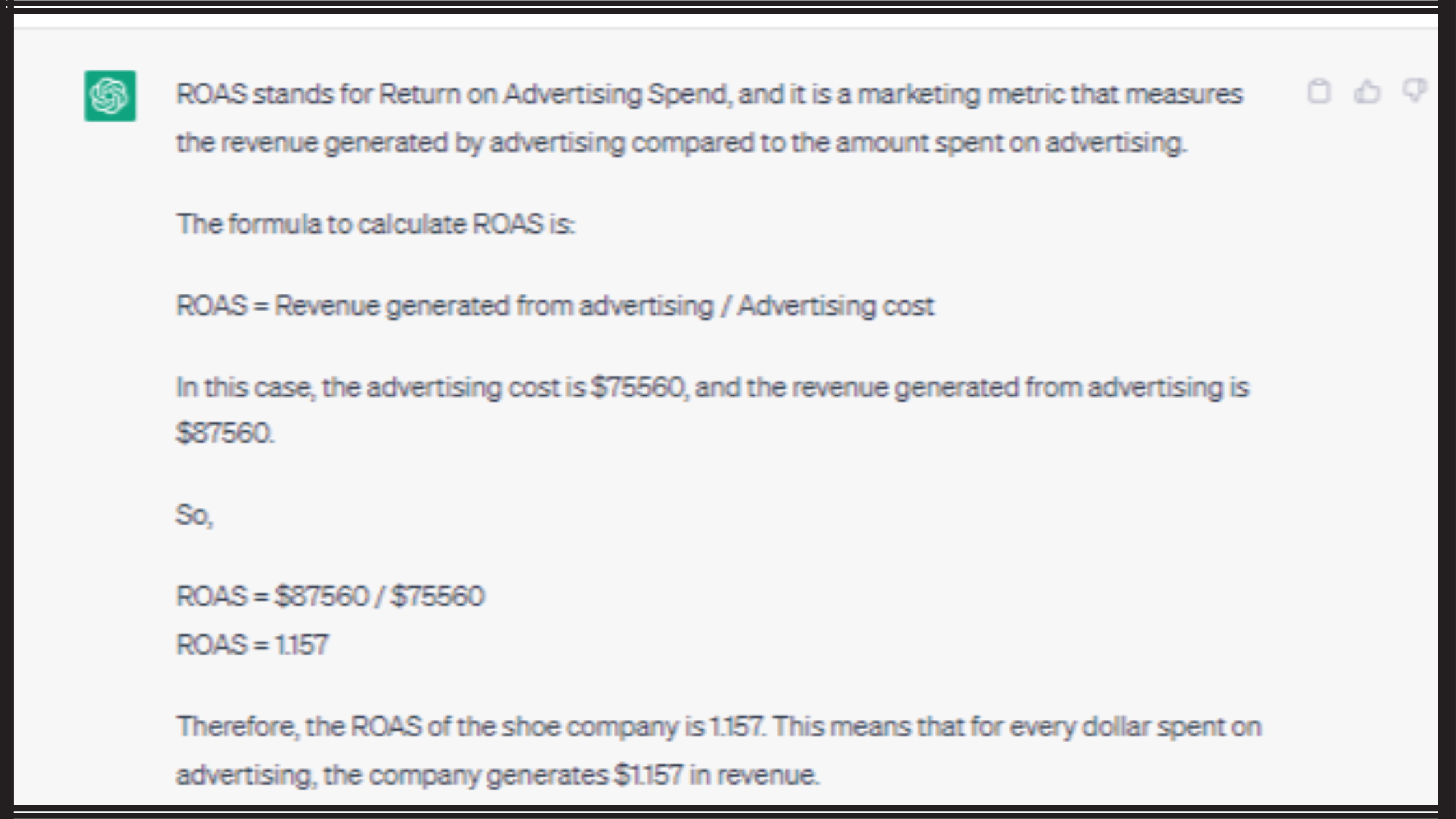
The image above showcases an example of using chatGPT to calculate the return on ad spending through a prompt. Similarly, you can use it for business reports and calculations.
#2. Sentiment analysis
Sentiment analysis is another use of generative AI, which involves text analysis to determine the user’s sentiment or emotion. This can be useful for companies that want to monitor customer sentiment toward their products or services. Sentiment analysis can also be used in social media monitoring, market research, and more.
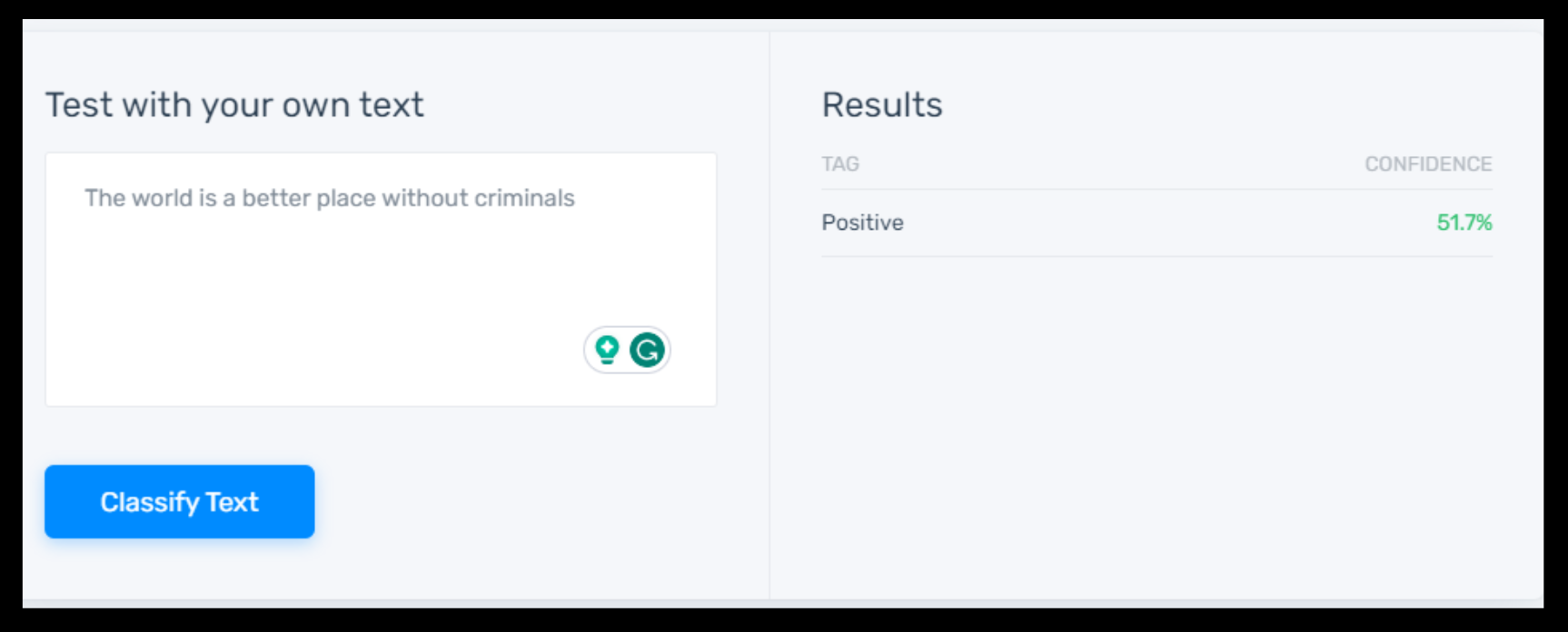
Take an example of a generative AI tool that helps analyze the sentiment behind any written text. It analyzes the syntax and context of the text to provide whether the sentiment is positive or negative.
#3. Image generation and enhancement
You can use generative AI for image generation and enhancement. Such generative AI tools use machine learning algorithms to create everything from abstract art to photorealistic landscapes. Moreover, they can also enhance images by improving image quality, such as removing noise or improving color balance.
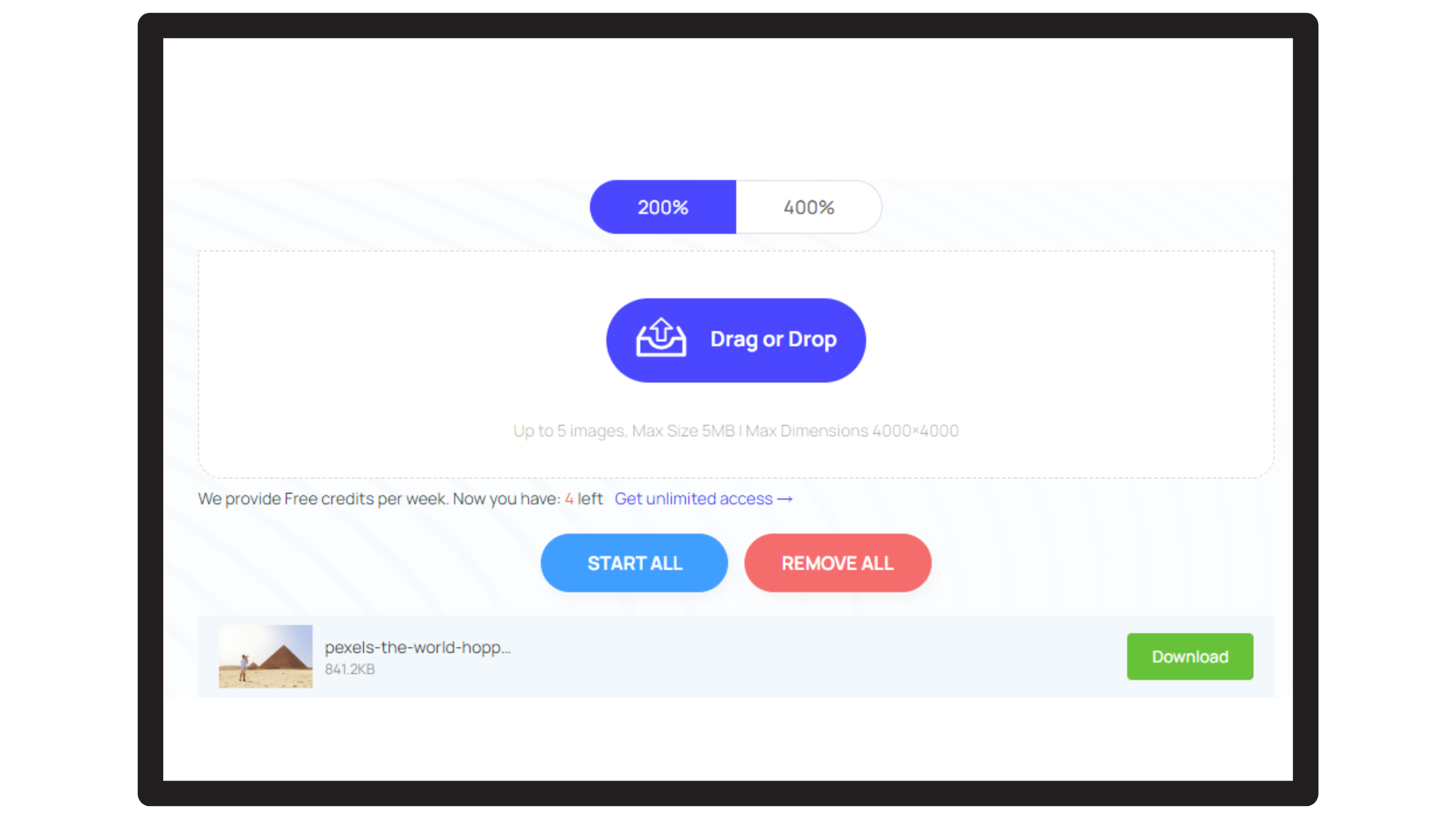
Here is an example of a generative AI tool you can use t upscale images by 200 or 400%.
#4. Video creation
Using machine learning algorithms, generative AI tools can also create or edit videos based on your text prompts or data inputs.
The video creation feature is particularly useful to advertising, entertainment, and education businesses. Marketers can also use tools based on AI models to create everything from short advertisements to full-length feature films.
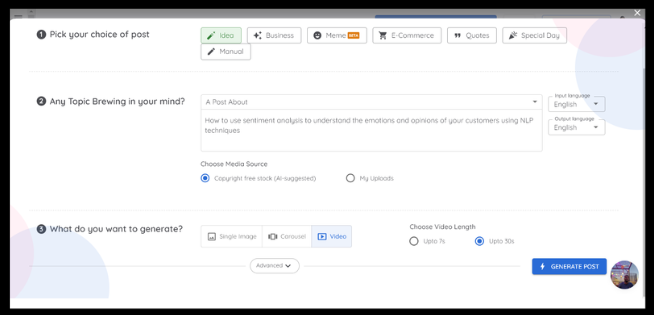
Check out this super helpful generative AI tool that helps you create videos and customize them in a jiffy.
#5. Code generation
Code generation is another exciting use of this wonderful technology. Generative AI models like GPT-3 can be trained on large amounts of code from various programming languages to create new code. AI-assisted code generation can be used to automate the process of creating website templates, building API clients, or even developing entire software applications.
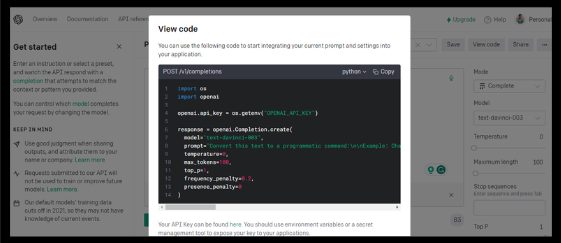
Ultimately, code generated by a generative AI model can speed up the development process and reduce the need for manual coding. A simple generative AI code example is Open AI’s Playground which lets you create programmable commands through text prompts.
#6. Speech to Speech conversion (STS)
Speech-to-speech conversion is an impactful feature of most generative AI models. It involves the conversion of one natural language to another in real-time. This can be useful for various applications, such as language translation and interpretation.
#7. Text-to-Speech generation (TTS)
Text-to-speech generation refers to converting written text into spoken audio using natural language processing. This feature can automate tasks such as creating audiobooks, building voice assistants, and more.
#8. Audio generation
Using machine and deep learning models, you can use generative AI to create new audio content. With just a few clicks, you can use AI models to create everything from music to sound effects to voiceovers.
#9. Synthetic data generation and augmentation
Synthetic data generation involves creating unique data from the input of the original dataset. This is useful when there is not enough data to train a machine-learning model or when it is difficult to obtain new data.
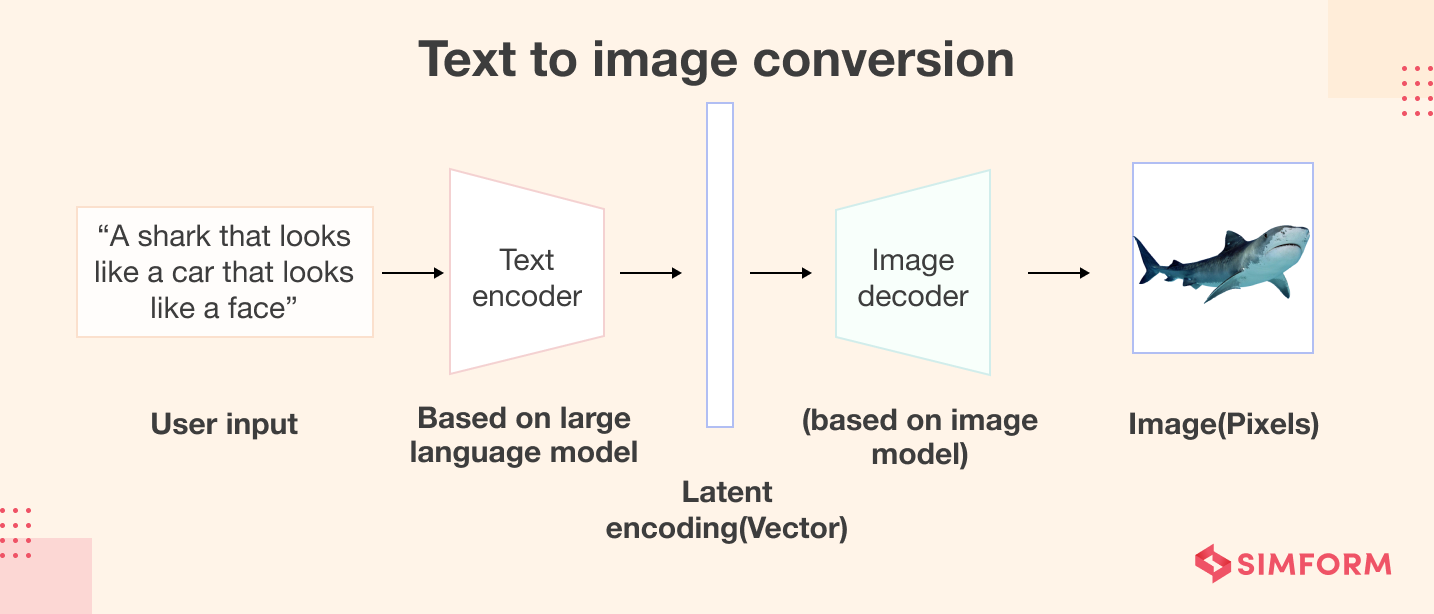
Synthetic data can generate images of objects that do not exist in the real world, such as a new type of car or a fictional creature. For example, Dall-E uses multiple models, including a transformer, a latent representation model(LRM), and CLIP, to translate English phrases into code.
Further, this code generates images and ranks existing images based on how closely they relate to the given phrase.
Use cases of generative AI models across domains
Generative AI technology automates text or image generation, offering intelligent recommendations in healthcare, arts, social media marketing, and other domains.
#1. Healthcare
Generative artificial intelligence has made significant advancements in the healthcare industry. For example, AI scrutinizes medical records, symptoms, and images, to aid medical professionals in accurately diagnosing illnesses.
Healthcare professionals can use generative AI to create personalized patient plans based on their medical history, genetic makeup, and personal preferences. They can also integrate it with IOT or wearable devices to monitor patients’ health and offer instant recommendations.
#2. Art and Animation
Advanced AI technology has dramatically changed how the art and animation industry operates. Art creation has become easy, and a text prompt is enough to create artistic pieces. Generative model StyleGAN, for example, has made it possible to create real human faces and unique works of art in different styles.
Moreover, generative AI can assist artists and animators by providing them with new ideas and exhaustive features to enhance their artwork. One easy but very useful use case is generating many variations of an artwork.
A popular example of the use of generative AI in the field of animation is “The Dog and the Boy,” a short anime movie created by Netflix Japan. Do give it a watch, it’s super impressive!
#3. Marketing and Sales
You can leverage generative AI for marketing and sales campaigns to create personalized content without compromising users’ privacy.
For example, Markov chain models can analyze past purchase histories to provide product recommendations customized to each customer’s preferences.
Not only does this increase sales, but it also enhances customer satisfaction. Generative language models can also help businesses with customized advertising copy and product descriptions.
#4. Software Programming
The generative AI technology can help automate software programming tasks using LSTM (Long Short-Term Memory) network, which generates new code based on existing code.
This model can significantly improve the speed and efficiency of programming large language models. You can use generative AI models to create new software applications.
These tools can be of great help when you want to generate new data sets for machine learning algorithms to improve efficiency.
#5. Finance
Generative AI models can generate new financial data or conduct automated financial analysis tasks. One example is the Variational Autoencoder model, which can create artificial financial data to train machine learning models for financial analysis.
Such models can help fintech companies produce innovative trading strategies and predict future market trends.
#6. Manufacturing
The manufacturing industry can benefit from machine learning models to enhance production processes and create product designs. One such machine learning model is the Convolutional Neural Network(CNN), which can produce new 3D designs by examining existing ones.
This technology, used in tandem with generative AI models like GANs, can aid designers in producing innovative products that meet customer demands.
#7. Entertainment
There are powerful generative AI tools that media houses and entertainment companies use to generate original content automatically. One of the more popular tools is the Recurrent Neural Network(RNN).
It is a powerful technology for creating new music by analyzing existing musical patterns. Additionally, generative models can produce fresh video game content, including levels and characters, and generate new video content for streaming platforms.
Best practices for using generative AI
We discussed how generative AI offers exciting opportunities for businesses to create content, analyze data, and automate processes quickly and at scale. However, these powerful technologies come with risks around bias, misinformation, and harmful content. Here are some best practices to follow as you explore and experiment with generative AI tools:
- Have a clear business use case in mind – don’t use the technology simply because it’s new and exciting. Consider how it can enhance specific workflows.
- Test rigorously before deployment, auditing for issues like bias, factual inconsistencies, and verbosity that may require fine-tuning. Also have humans review output.
- Use NSFW filters to limit inappropriate content and establish internal processes for handling policy violations if they occur.
- Train models thoughtfully on high-quality, representative datasets connected to the relevant task. Diverse, cleanly-labeled data helps models generate more fairly and accurately.
- Be transparent with stakeholders about if and how generative models are used, particularly for public-facing content or sensitive applications. Credibility matters.
- Revisit and reassess periodically as models improve. Generative AI is evolving rapidly, as best practices should too.
As with any powerful technology, wisdom, and oversight are vital to avoiding harm.
Prominent examples of generative AI tools
Here are the top generative AI examples in real-world — popular tools that have transformed the way businesses operate now.
#1. ChatGPT
ChatGPT is a significantly popular language model trained by OpenAI that can be used for various natural language processing tasks, such as text generation, question answering, and language translation.ChatGPT has been pivotal for AI-based agent development.
It uses generative AI technology to generate text responses for human prompts. Open AI offers ChatGPT APIs that you can use to build customized chatbots.
#2. GitHub Copilot
GitHub Copilot is a tool that helps developers write code faster by suggesting pieces of code that fit with what they’re writing.
It uses Codex technology, a deep learning model trained on a large data set of source code. GitHub Copilot can significantly save time and reduce errors in the coding process.
#3. Firefly
Firefly can create high-quality images and stunning text effects from just textual inputs. Adobe powers it to help users create image art for different purposes.
Using Firefly, you can create designs across Creative Cloud, Document Cloud, Experience Cloud, and Adobe Express workflows.
#4.Pictory.AI
Pictory.AI is a generative AI tool that can create short-form videos from long-form content. You can use Pictory.AI to transform long Youtube videos into shorts or reels for Instagram.
#5. Midjourney
Midjourney is an AI image generator that uses a Discord bot to create realistic and artistic images based on text prompts. Users can edit, upscale, and download their creations. It also helps generate descriptions for images based on user input.
This tool generates “pretty images” that are aesthetically pleasing rather than just functional.
#6. Wordtune
Wordtune is an AI writing assistant that helps users improve their writing style, tone, clarity, and fluency. It can rewrite sentences, suggest alternative words, generate questions, and more.
Wordtune is powered by natural language understanding and generation technologies developed by AI21 Labs.
#7. Gretel
Gretel is an AI platform that helps users create synthetic data for testing, training, and sharing purposes.
It can anonymize, label, augment, and synthesize data from various sources and formats. Gretel aims to make data safe and accessible for everyone.
#8. Genie AI
Genie AI summarizes long texts into shorter, easy-to-read synopsis. It uses advanced NLP techniques to identify key themes and ideas in the text and create accurate summaries.
You can also customize the kind of output you want; for example, whether you need a brief overview of the text or a detailed summary.
The future of generative AI
The future of generative AI looks incredibly promising.
As the technology evolves, you can expect generative AI capabilities to become more seamlessly integrated into the tools and applications you already use. For example:
- Your editors and design software will get smarter, offering real-time recommendations and enhancements powered by generative AI.
- Training programs will also benefit, as the technology can automatically identify and share best practices across your organization, helping to upskill employees more efficiently.
Beyond productivity gains, generative AI will drive innovation in various industries:
- The technology will accelerate drug discovery in the medical field, helping researchers identify promising new compounds more quickly.
- Architects and engineers will use generative AI to explore and visualize novel design concepts in 3D.
- Businesses will harness the power of generative AI to transform their supply chains, streamline processes, and even create new products and services.
As these capabilities become more ubiquitous, you must navigate the evolving ethical and trust considerations. Staying vigilant about clearly labeling AI-generated content, vetting the accuracy of results, and addressing biases will be crucial.
How does Simform power AI-based virtual agents for businesses?
AI algorithms are not new, but generative AI has been empowering a new way of using this technology for business automation. Companies can now generate unique data rapidly, engage customers, and provide personalized content.
The most attractive use case of generative AI is a virtual agent that offers natural language conversation with customers.
Simform has been at the forefront of developing AI-based agents which help businesses personalize user interactions. If you want to integrate the power of generative AI into your business, contact us for a free 30-minute consultation.
FAQs:
Generative AI refers to artificial intelligence systems that can create new content, such as text, images, audio, or video. These models learn patterns from vast training data and use that knowledge to generate novel outputs. Unlike traditional AI, which focuses on analysis or prediction, generative AI produces original content that didn’t exist.
Building a generative AI model involves several key steps:
- Define the task and gather relevant training data
- Choose an appropriate model architecture (e.g., transformer for text, GAN for images)
- Design the model’s structure, including layers and parameters
- Implement the model using machine learning frameworks like TensorFlow or PyTorch
- Set up the training pipeline and infrastructure
- Train the model on the collected data
- Evaluate and refine the model’s performance
- Deploy the model for practical use
Training a generative AI model requires:
- Preparing a large, diverse dataset relevant to the desired output
- Splitting the data into training and validation sets
- Defining a loss function to measure the model’s performance
- Setting hyperparameters like learning rate and batch size
- Feeding batches of data through the model
- Calculating the loss and adjusting model weights through backpropagation
- Repeating this process for many iterations until performance plateaus
- Fine-tuning the model on specific tasks or domains if needed
Generative AI transforms creative work in several ways:
- Augmenting human creativity by providing inspiration and starting points
- Automating routine tasks, allowing creatives to focus on high-level concepts
- Enabling rapid prototyping and iteration of ideas
- Democratizing content creation by lowering technical barriers
- Facilitating personalized content at scale
- Introducing new artistic styles and techniques
- Challenging notions of authorship and originality
Generative AI will likely impact various jobs, potentially replacing some roles while creating new opportunities in others:
Jobs at risk:
- Stock photography and illustration
- Basic copywriting and content creation
- Simple graphic design tasks
- Low-complexity software coding
- Data entry and analysis
However, generative AI will also create new roles and enhance existing ones:
- AI trainers and prompt engineers
- AI ethics specialists
- Human-AI collaboration experts
- AI-assisted creative directors
- AI system maintainers and optimizers

